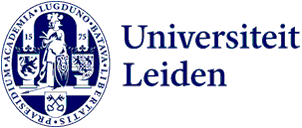
Shaping the future with stories from the past
You can see an archaeologist as a modern-day shaman, someone who builds bridges to the past and can offer profound insights. This is the unexpected comparison that Professor by Special Appointment of Public Archaeology Luc Amkreutz will make in his inaugural lecture on the role of archaeologists in the year 2024. ‘Archaeology offers a perspective on ourselves that can be of use to our society.’
Amkreutz wants to move away from the discussion about whether the Dutch name for his discipline should be ‘publieke archeologie’ or ‘publieksarcheologie’. He prefers to stick to the English ‘public archaeology’. ‘Because it’s about both offering archaeology to the general public and actively engaging and appealing to that public.’ Alongside his appointment at Leiden University, Amkreutz is the curator of the prehistory collection at The Dutch National Museum of Antiquities (RMO).
Right to participate
In his inaugural lecture, Amkreutz will distinguish three different aspects of public archaeology. ‘It’s about science communication − what you might call the classic “transmission” − but it’s also about public participation and social relevance.’ A hot topic, especially with the Netherlands recently signing the Faro Convention. This is all about people’s right to be involved in heritage and making it more accessible.
‘Archaeology takes place in a community and that community has the right to participate’
By public participation, Amkreutz means active public participation in archaeological research and museum collections. ‘Archaeology takes place in a community and that community has the right to participate. The public played a crucial role in research on Doggerland, for example, the submerged area off our coast. Nearly every major discovery there was made by hobbyists − from the skull fragment of the first Neanderthal to the oldest glue, a black kind of substance found on a flint knife. That knife was found by Willy van Wingerden, a nurse in geriatric care.’
Lessons from the past
For Amkreutz, the third aspect, social relevance, is an integral part of his profession. ‘Archaeology is no longer just about increasing our knowledge of the past. It also offers a perspective on ourselves that can be of use to our society. It is the only science that documents human behaviour and human society in an enormous time depth. That provides an important source of information that can be incredibly valuable today.’
This is the point at which Amkreutz turns his gaze to the future. ‘Our society and environment are going to change’, he says. ‘That will cause friction and then it can help to learn from the past.’ As a concrete example, he mentions Aboriginals who used fire ecology to make their land more resilient to wildfires. ‘But at a more abstract level, it can also be about ways of living together. In prehistory, for example, there were successful communities as big as Leiden that lacked any trace of central authority. I think we can find ideas and inspiration in how diverse we as a species and society really are.’
-

Person on a beach looking for archaeological finds (F. de Winter/RMO) -

Neanderthal knife with birch tar, the oldest glue in the Netherlands (RMO) -

First picture of a shaman by Nicolaas Witsen (Evenki, Russia, 1705)
‘The past is alive: everyone has an opinion on it and we should be aware of that.’
But how far should contemporary archaeologists go? ‘The past is alive: everyone has an opinion on it and we should be aware of that. We need to speak out, as long as we do so in the voice of science’, says Amkreutz. ‘It is our responsibility to let nuance shine through and to stand up when science comes under attack.’ He calls on archaeology programmes to also focus on communication and social engagement. ‘On how you can already think during your research: What will come out of this? What else can I do with this? How can I get this across in such a way that it will not be misused?’
Museum as sweat lodge
To sum up the role of public archaeologists, Amkreutz draws inspiration from the past. ‘For hunter-gatherers, shamans played an important role. They were in contact with the world of spirits, spirituality and ancestors and acted as mediators for the group they lived in. As archaeologists, we too travel to the past. Museums are our modern sweat lodge, a place where you gain insight. Public archaeologists are like contemporary shamans: we take enigmatic information and try to construct a story that will benefit the group in which we live.’
On Friday 1 March at 14.00, Luc Amkreutz will give his inaugural lecture Veerkrachtig Verleden Veerkrachtig Verleden. Een reflectie op archeologie, archeologen en musea in het Antropoceen (Resilient Past. A reflection on archaeology, archaeologists and museums in the Anthropocene.) Amkreutz was appointed Professor by Special Appointment of Public Archaeology at the Faculty of Archaeology on behalf of the National Museum of Antiquities in April 2022.
Text: Julie de Graaf
Main photo: F. de Winter/RMO
